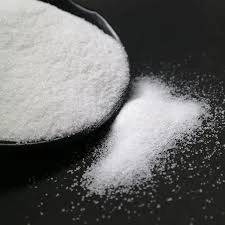Cationic Polymers Used in Water Treatment An Overview
Water is essential for life, and providing access to clean water is a global priority. The treatment of water to remove impurities and pollutants is crucial, and cationic polymers have emerged as significant agents in this process. This article explores cationic polymers, their properties, applications, and their role in water treatment.
What are Cationic Polymers?
Cationic polymers are macromolecules that possess a positive charge. This positive charge allows them to interact efficiently with negatively charged particles, such as suspended solids, organic matter, and colloidal substances commonly found in wastewater. Due to their unique chemical structure, cationic polymers can flocculate, coagulate, and facilitate the removal of these harmful particles from water, making them invaluable in treatment processes.
Properties of Cationic Polymers
Cationic polymers exhibit several critical properties that enhance their effectiveness in water treatment
1. Charge Density The degree of charge on cationic polymers can vary, influencing their effectiveness. High charge density polymers are particularly efficient at neutralizing negatively charged particulates in water.
2. Molecular Weight The molecular weight of these polymers plays a vital role in their performance. Higher molecular weight cationic polymers generally create larger flocs that can be more easily removed from water.
4. Biodegradability Many cationic polymers can be designed to be biodegradable, reducing ecological concerns associated with their use.
cationic polymer used in water treatment

Applications in Water Treatment
Cationic polymers are used in a variety of applications within water treatment processes
1. Coagulation and Flocculation One of the primary uses of cationic polymers is in the coagulation and flocculation processes. When added to wastewater, these polymers neutralize the negative charges on colloidal particles, allowing them to come together and form larger aggregates (flocs) that can be easily removed through sedimentation or filtration.
2. Sludge Dewatering Cationic polymers are also utilized in the dewatering of sludge. By promoting flocculation, they help increase the solids content of sludge, simplifying the subsequent handling and disposal processes.
3. Wastewater Treatment Plants In municipal and industrial wastewater treatment plants, cationic polymers play a critical role in improving the overall efficiency of the treatment process. They enhance the removal of suspended solids, phosphates, and other undesirable components.
4. Oil Water Separation Cationic polymers can also be effective in separating oil from water in industrial effluents, making them valuable in oil spill remediation and the treatment of oily wastewater.
Environmental Considerations
While cationic polymers are effective in enhancing water treatment processes, their use does raise some environmental concerns. The discharge of treated water containing residual cationic polymers can impact aquatic life and water quality. Therefore, careful consideration must be given to the type and amount of polymers used in treatment processes. Research into developing environmentally friendly and biodegradable cationic polymers is ongoing, focusing on minimizing ecological impacts while maintaining efficacy.
Conclusion
Cationic polymers represent a vital component in modern water treatment processes. Their ability to interact with and facilitate the removal of negatively charged impurities makes them indispensable in ensuring access to clean water. Continued advancements in polymer chemistry promise to enhance their performance and reduce environmental impacts, highlighting the importance of ongoing research and development in this field. As global water challenges grow, the role of cationic polymers will undoubtedly remain crucial in protecting our water resources and supporting public health.

